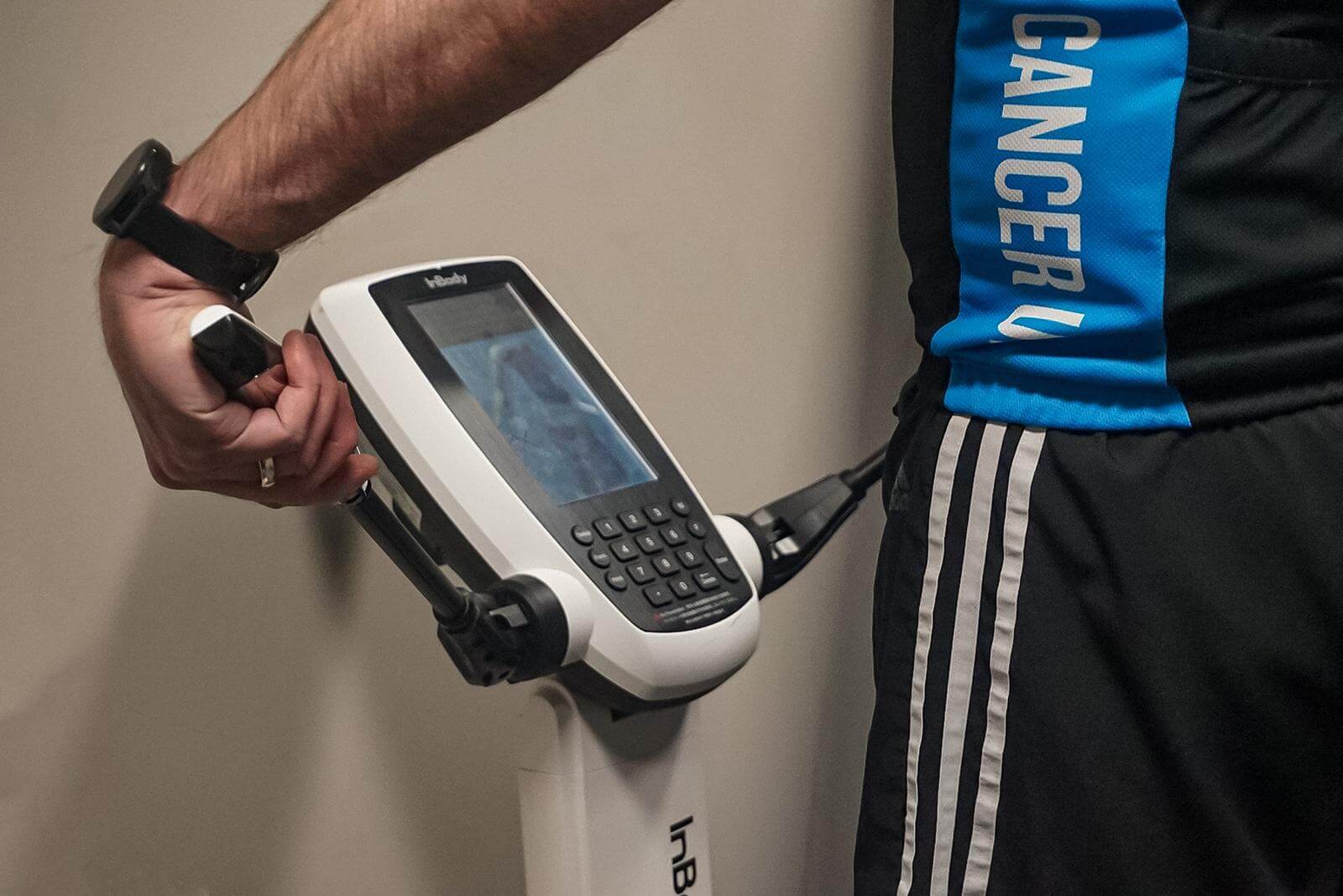

When you step on a scale at home, what does your weight actually represent, all you see is a number with no context. The InBody Test goes beyond the normal scales, it is a non-invasive method that provides detailed and accurate body composition analysis.
Body composition is used by health professionals to evaluate a persons weight by breaking it down into its core components: fat, protein, minerals and water.
It describes your healthy weight more accurately and provides a better insight into overall health than traditional methods like BMI or weight.
Body composition can accurately show changes in fat mass, lean muscle mass and body fat percentage.
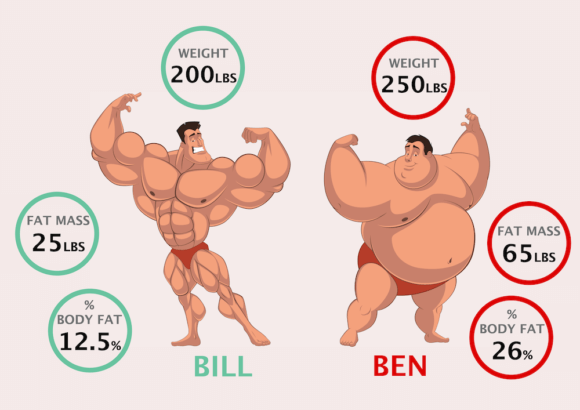
Measuring your body composition will tell you your own body’s unique makeup and help you identify areas to work on to improve your overall health and wellness.
Getting a better insight into this will give you the relative information that will tell you whether you need to gain more lean mass or lower body fat percentage to achieve a healthy body composition and a better level of health.
Without this information you may end up focusing on losing weight which may come from muscle mass and consequently sabotage your own effort to be healthy.
By differentiating between muscle & body fat, body composition removes the guesswork of weight fluctuations (from muscle gain, fat loss, food in the intestine, or hydration levels).
Whatever your goal may be, an important thing to keep in mind during your fitness journey is there is more to health than just being thin!
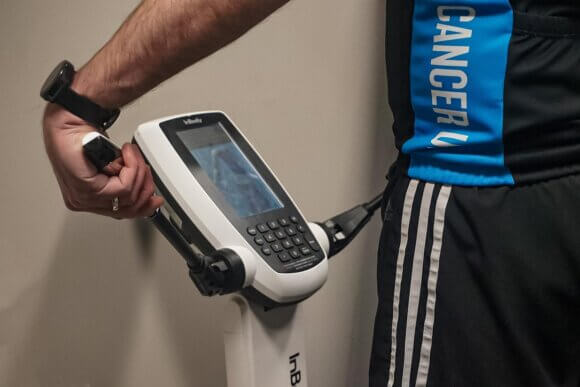
InBody uses Bioelectric Impedance Analysis (BIA), which is a method of measuring impedance by applying alternating electrical current to a user to measure their volume of water through impedance values.
This method involves contact of electrodes on the soles of the feet and in both hands. Low-level electrical current is sent through the body, and the flow of the current is affected by the amount of water in the body. BIA devices measure how this signal is impeded through different types of tissue (muscle has high conductivity but fat slow the signal down). As BIA determines the resistance to flow of the current as it passes through the body, it provides estimates of body water from which body fat is calculated using selected equations.
If you’d like to know more about how the technology works, click here.
Firstly, you will be asked to remove your shoes and socks and then, you will stand on the metal pads on the InBody scanner and take hold of the handles.
Keep your arms straight and away from your body. Stay relaxed and still until the test is completed. Your InBody results will print automatically once the test is completed.
For the best results, it is advised to book your scan for a time when you could ensure you have not eaten or had coffee yet and have empty bowels to allow the electrodes to work as accurately as possible. Sometimes food in the intestines can alter your results and they will not be an accurate representation of your composition.
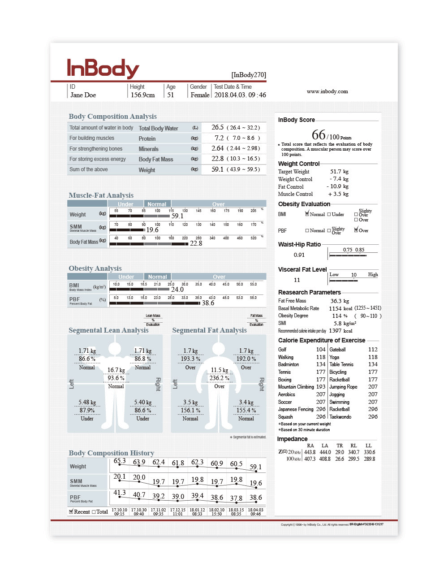
Body Composition Analysis
Bodyweight is the total of these four components: total body water, protein, minerals and body fat mass.
Total Body Water can be divided into Intracellular Water and Extracellular Water. Intracellular is the amount of body water held within the body’s cells; Extracellular is the water outside the cells.
Minerals account only about 5-6% of body weight and are not an energy source, but they are essential nutrients to maintain life and health. Most of which constitute bones and teeth.
Body Fat Mass reports all of the body fat, including both the surface level (subcutaneous) and internal (visceral) fat.
Most of the time, increases in Fat Free Mass reflect increases in muscle (which you can also see as an increase in Protein because muscle is mostly made up of protein), and is considered a positive improvement in body composition.

This section makes it simple for you to have a good, general idea about your current overall body composition and what changes you need to make.
While the healthy range varies depending on age and gender, ‘100%’ designates the average for individuals with the same height and gender. So, if the weight bar extended to ‘130%’, this would mean that you are 30% above average. Similarly, if your weight bar is extended to ‘70%’, this would mean that you have 30% less mass than is considered normal for their height.
WEIGHT = Total Body Weight
SKELETAL MUSCLE MASS (SMM) = The total weight of your Skeletal Muscle. These are the muscles that can be grown and developed through exercise. Unlike Fat Free Mass, which includes everything that isn’t body fat, you can view an increase in SMM as actual muscle gain.
BODY FAT MASS = This is how much body fat you have, and includes both the surface level and internal fat. The Muscle-Fat Analysis also tells you whether you have a healthy balance of SMM and Body Fat Mass in respect to your weight.
The Basic Body Types: “C-Shape”
A C-shaped individual has a shorter bar length for Skeletal Muscle Mass than for weight and Body Fat Mass. Although this is characteristic of someone who is overweight or obese, you may see this shape in someone who is normal or underweight, too.
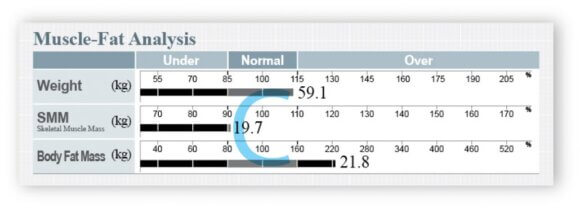
The Basic Body Types: “I-Shape”
An I-shaped individual has a “balanced” body composition, meaning their Weight, Skeletal Muscle Mass, and Body Fat Mass bars roughly form a straight line. Although people with this body composition are often at a healthy weight or body fat percentage, they can still have health risks if they have too much body fat.
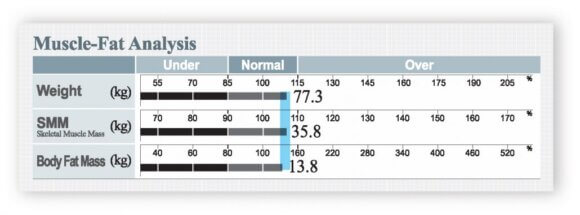
The Basic Body Types: “D-Shape”
A D-shaped person has a longer Skeletal Muscle Mass bar than both their weight and body fat bars. This is indicative of an “athletic” body type and is considered to be the ideal body composition shape.
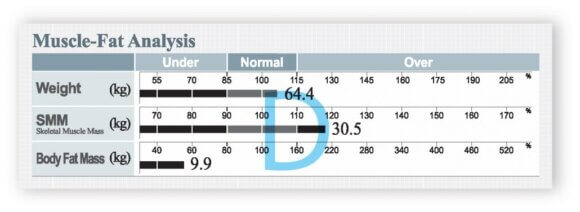
It’s a deceptively simple metric – a division of body fat mass by total weight – but it is a much better indicator of the risk of obesity than BMI. See diagram below which explains why…
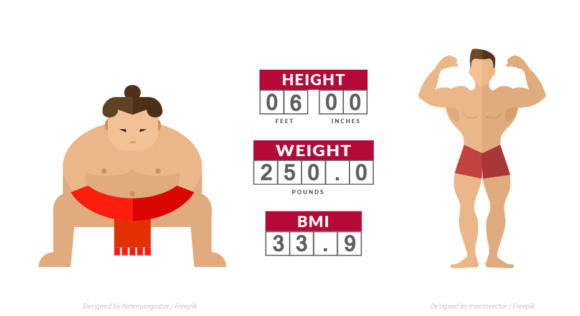
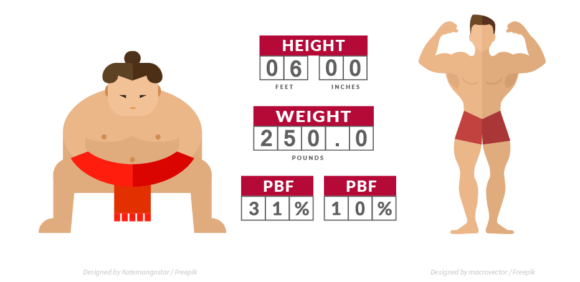
On the InBody Result Sheet, you’ll see the normal ranges for BMI and PBF are 18 – 25 kg/m2 according to the World Health Organisation. For PBF, the ranges differ for men and women, as women tend to carry more body fat than men due to their reproductive system as well as genetics.
For men, the healthy PBF range is between 10-20%.

For women, the healthy PBF range is between 18-28%

FAT FREE MASS vs. MUSCLE MASS
The information in the Segmental Lean Analysis shows how much Fat Free Mass is contained in each segment; not how much “muscle” is in each segment.
This is an important distinction. While it is true that Skeletal Muscle gains in a body segment will be reflected as gains in the Segmental Lean Analysis chart, not every gain in Fat Free Mass can be explained by muscle. That’s because Fat Free Mass is the sum of all the non-fat components in the body.
You should always work to be at 100% or higher.
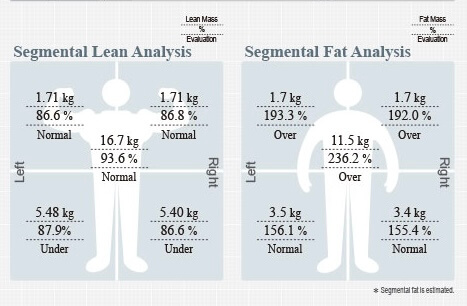
This section can be used to track your improvements in body composition and changes in body fat, over time. While studies have shown that you can’t “spot target” body fat with exercise, you can use this section for a more detailed account of the improvements you are making.
This part of the results sheet automatically tracks some of the most important body composition metrics. This makes it really easy to identify trends over time.
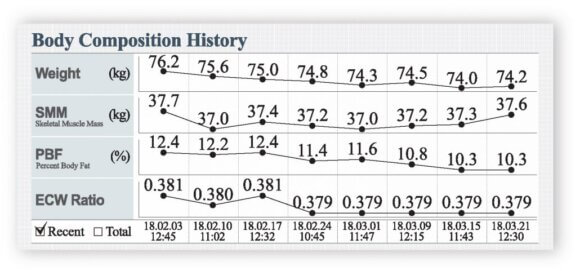
This section (found on the right hand side) makes it incredibly simple to set goals. It is designed to help you reach your ideal body composition. Depending on your current Muscle-Fat balance, this section of the Result Sheet will recommend adjusting fat mass and/or muscle mass in order to reach the target weight.
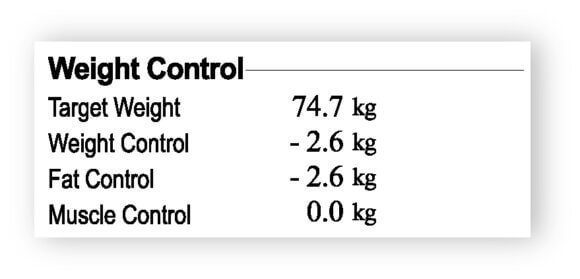
If you would like further information, please visit the InBody website or book a session with one of our trainers to get a more in-depth analysis of your results.
Book your InBody scan with reception via email: info@instinct78.co.uk.
Get started with Instinct in Tarporley.
By continuing to use the site, you agree to the use of cookies. more information
The cookie settings on this website are set to "allow cookies" to give you the best browsing experience possible. If you continue to use this website without changing your cookie settings or you click "Accept" below then you are consenting to this.